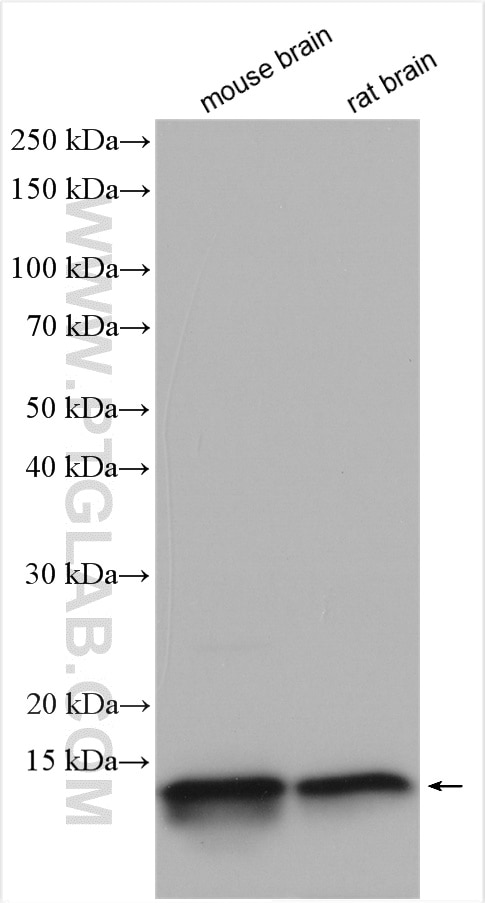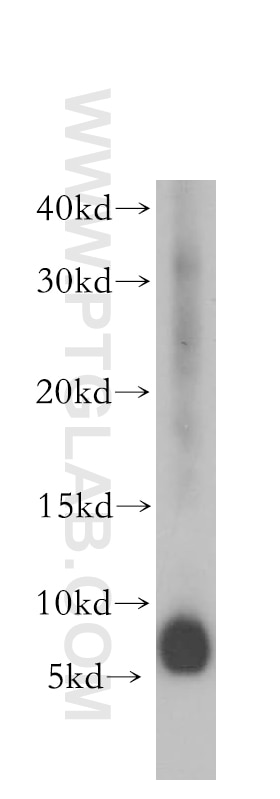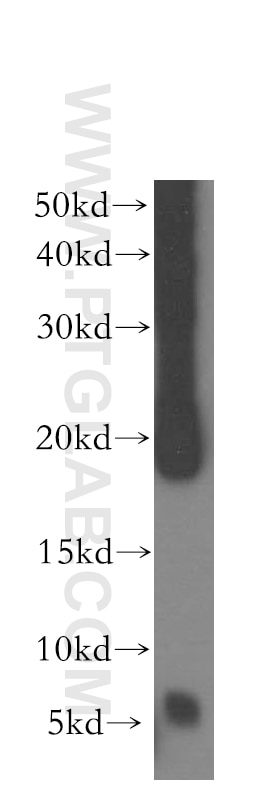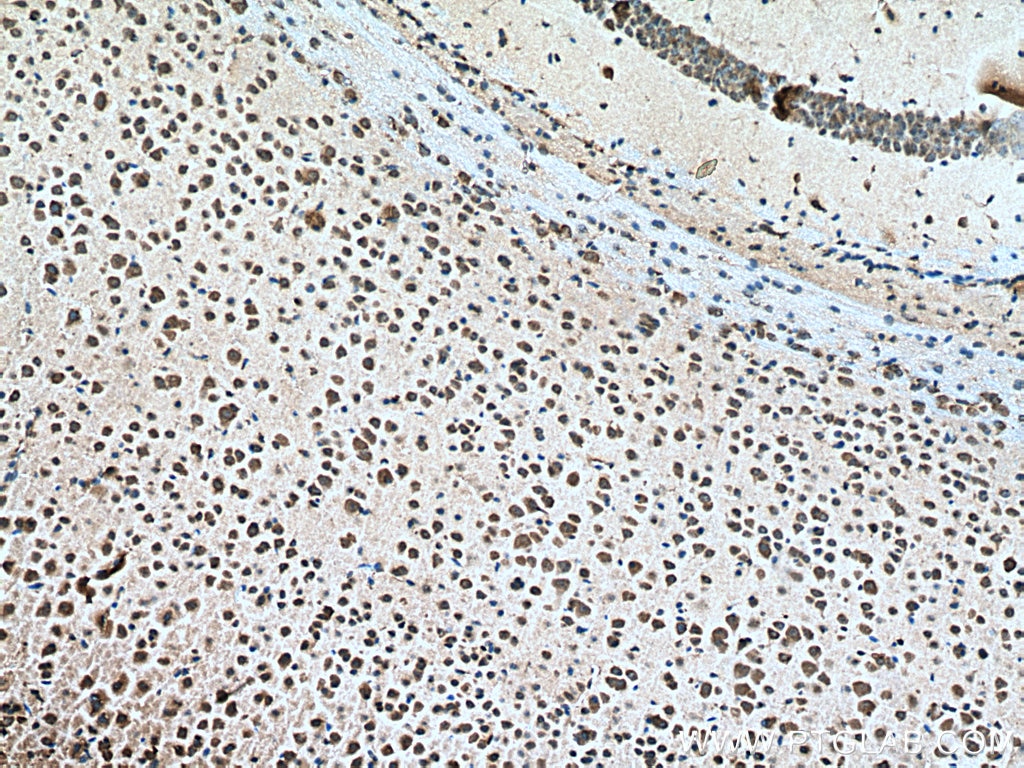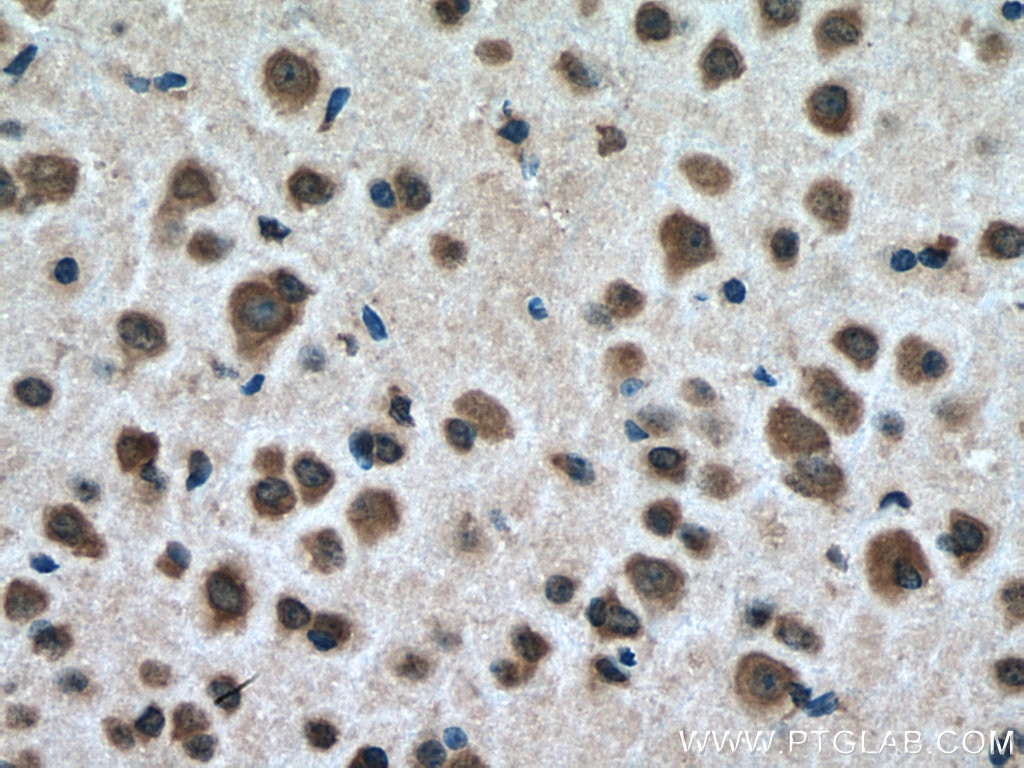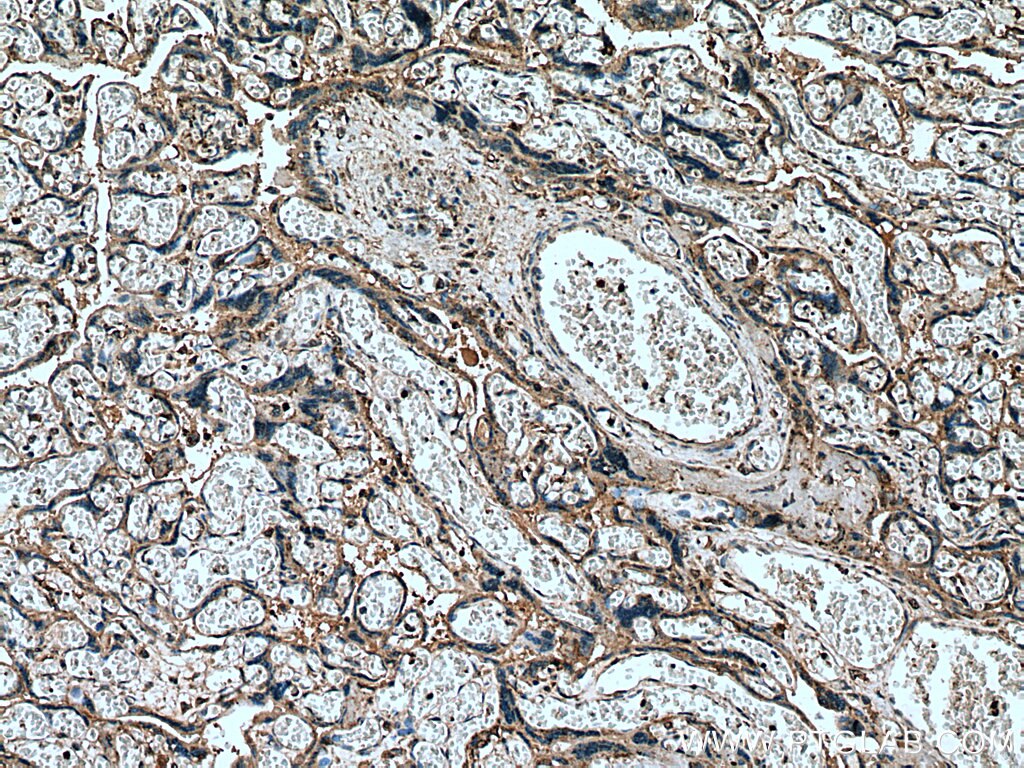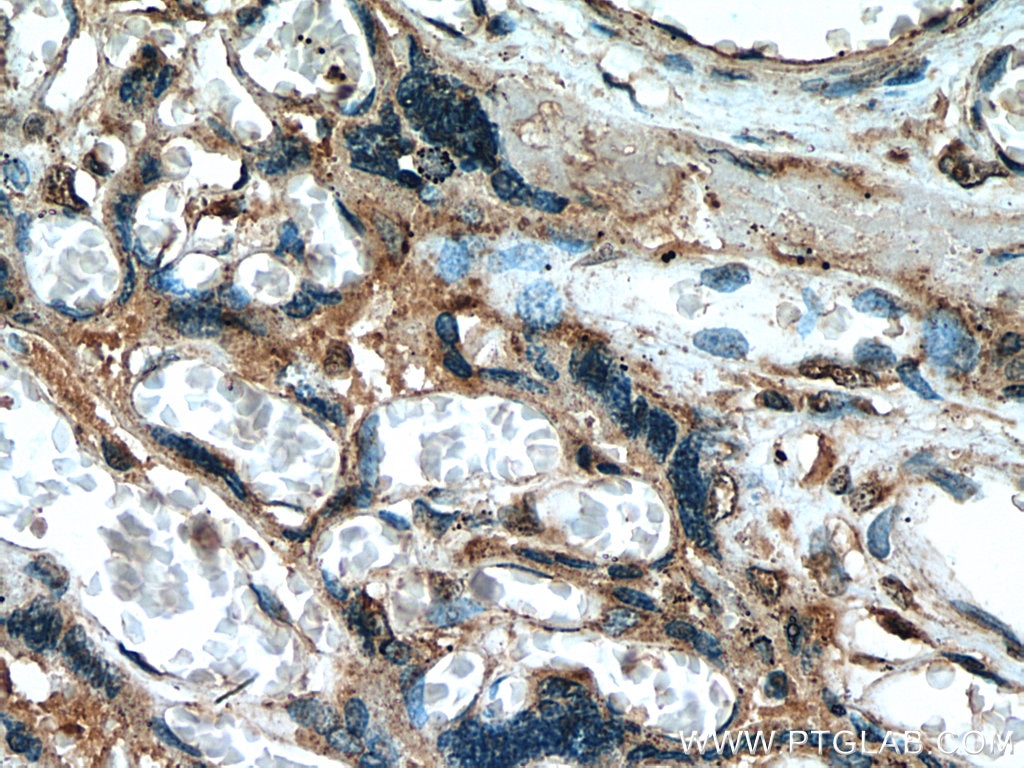Validation Data Gallery
Tested Applications
| Positive WB detected in | mouse brain tissue, human liver tissue, human brain tissue, rat brain tissue |
| Positive IHC detected in | mouse brain tissue, human placenta tissue Note: suggested antigen retrieval with TE buffer pH 9.0; (*) Alternatively, antigen retrieval may be performed with citrate buffer pH 6.0 |
Recommended dilution
| Application | Dilution |
|---|---|
| Western Blot (WB) | WB : 1:500-1:1000 |
| Immunohistochemistry (IHC) | IHC : 1:50-1:500 |
| It is recommended that this reagent should be titrated in each testing system to obtain optimal results. | |
| Sample-dependent, Check data in validation data gallery. | |
Published Applications
| WB | See 4 publications below |
| IF | See 1 publications below |
Product Information
17716-1-AP targets USMG5 in WB, IHC, IF, ELISA applications and shows reactivity with human, mouse, rat samples.
| Tested Reactivity | human, mouse, rat |
| Cited Reactivity | human, mouse, rat |
| Host / Isotype | Rabbit / IgG |
| Class | Polyclonal |
| Type | Antibody |
| Immunogen |
CatNo: Ag12086 Product name: Recombinant human USMG5 protein Source: e coli.-derived, PET28a Tag: 6*His Domain: 1-58 aa of BC072683 Sequence: MAGPESDAQYQFTGIKKYFNSYTLTGRMNCVLATYGSIALIVLYFKLRSKKTPAVKAT 相同性解析による交差性が予測される生物種 |
| Full Name | up-regulated during skeletal muscle growth 5 homolog (mouse) |
| Calculated molecular weight | 58 aa, 7 kDa |
| Observed molecular weight | 6 kDa |
| GenBank accession number | BC072683 |
| Gene Symbol | USMG5 |
| Gene ID (NCBI) | 84833 |
| RRID | AB_2214288 |
| Conjugate | Unconjugated |
| Form | |
| Form | Liquid |
| Purification Method | Antigen affinity purification |
| UNIPROT ID | Q96IX5 |
| Storage Buffer | PBS with 0.02% sodium azide and 50% glycerol{{ptg:BufferTemp}}7.3 |
| Storage Conditions | Store at -20°C. Stable for one year after shipment. Aliquoting is unnecessary for -20oC storage. |
Protocols
| Product Specific Protocols | |
|---|---|
| IHC protocol for USMG5 antibody 17716-1-AP | Download protocol |
| WB protocol for USMG5 antibody 17716-1-AP | Download protocol |
| Standard Protocols | |
|---|---|
| Click here to view our Standard Protocols |
Publications
| Species | Application | Title |
|---|---|---|
Sci Rep miR-379 links glucocorticoid treatment with mitochondrial response in Duchenne muscular dystrophy. | ||
Prog Neurobiol The low-density lipoprotein receptor-related protein-1 (LRP1) in Schwann cells controls mitochondria homeostasis in peripheral nerves | ||
Mol Psychiatry Proteasome-independent K63 polyubiquitination selectively regulates ATP levels and proteasome activity during fear memory formation in the female amygdala | ||
EBioMedicine Homozygous variant in translocase of outer mitochondrial membrane 7 leads to metabolic reprogramming and microcephalic osteodysplastic dwarfism with moyamoya disease |

